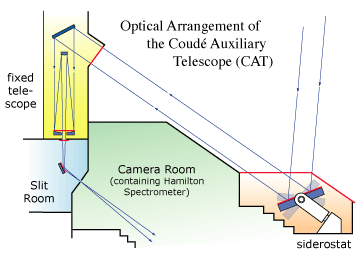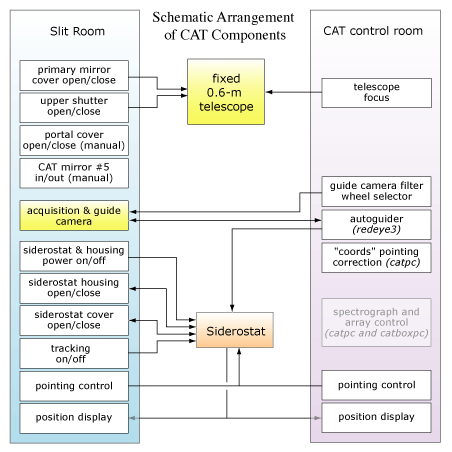|
The CAT is a stationary, 0.6-meter (24-inch), f36, cassegrain reflector,
mounted just inside the south wall of the 3-meter telescope dome, fed
by a flat tracking mirror (siderostat) housed under a retractable-roof shed,
on the south side of the dome.
The telescope is so arranged that its beam can be directed through the coude
spectrograph's entrance slit at the same angle, and with the same focal ratio,
as the beam of the 3-meter coude focus. Light from the CAT and 3-meter are
therefore indistinguishable from the viewpoint of the spectrometer.
Operationally, the important differences between the CAT and 3-meter -- apart
from the obvious one of light gathering power -- are
plate scale and
pointing limits:
the CAT sees 5 times more sky per unit area on the slit, and has
somewhat more restrictive limits in the north.
|

|

|

